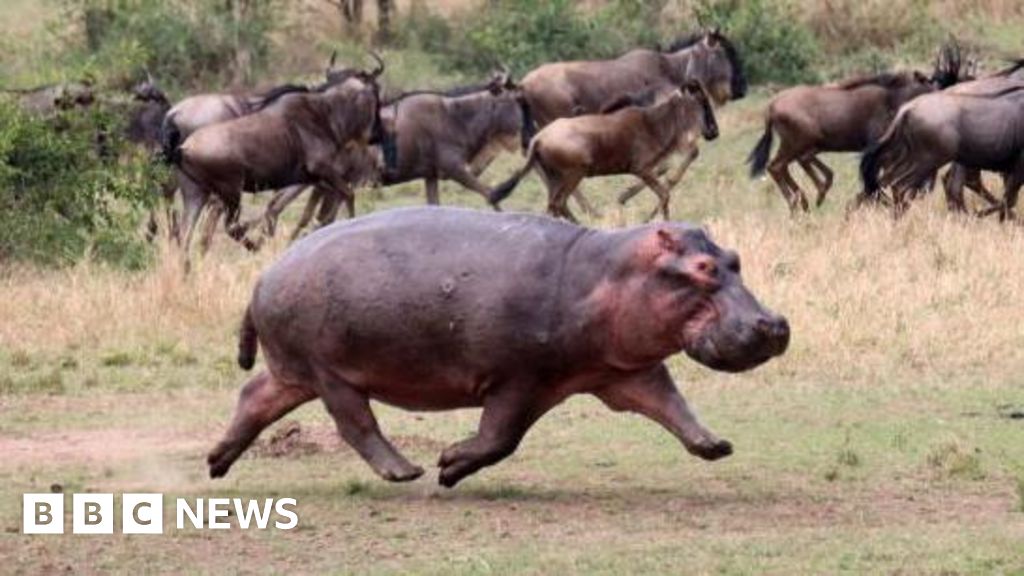
- Author, Rachel Russell
- Role, BBC News
According to animal experts, hippos can trot so fast that they can glide through the air for a while.
Studies by the Royal Veterinary College (RVC) show that all four feet of the animals can leave the ground for up to 0.3 seconds each.
The discovery was made after two hippos were filmed moving around in their enclosure at Flamingo Land in North Yorkshire.
Kieran Holliday of the zoo and theme park near Pickering said the study had provided new insights into how hippos move.
Hippos are among the largest land animals and can weigh up to two tons.
Previous studies had shown that the animals resembled elephants because they often used a standard quadrupedal gait, with a stride sequence of left hind leg, left foreleg, right hind leg, right foreleg.
However, Prof. John Hutchinson and former RVC student Emily Pringle investigated this further and collected video footage of two hippos moving around Flamingo Land.
‘Very impressive’
When they compared their videos with footage of hippos moving available on the Internet, they found that the animals could almost trot even when walking slowly or running quickly.
Prof Hutchinson, the lead author of the study, said it was “really impressive” to see how hippos could take off during rapid movements.
He said: “Hippos are difficult to work with as they tend to be aquatic and are very rarely trained for study in zoo collections.
“They are also very dangerous. That is one of the reasons why scientists knew very little about how hippos move before our research.
“We are very excited to present the first study focused exclusively on uncovering how hippos walk and run.”
“We were pleasantly surprised to see how hippos become airborne when they move quickly.”
Mr Holliday, Flamingo Land’s science and conservation officer, said: “Knowing more about the species we work with will help us care for them even better in the future. And the fact that this work has revealed new insights into hippo movement could have a positive impact on the zoo community in terms of husbandry and enclosure design.”



